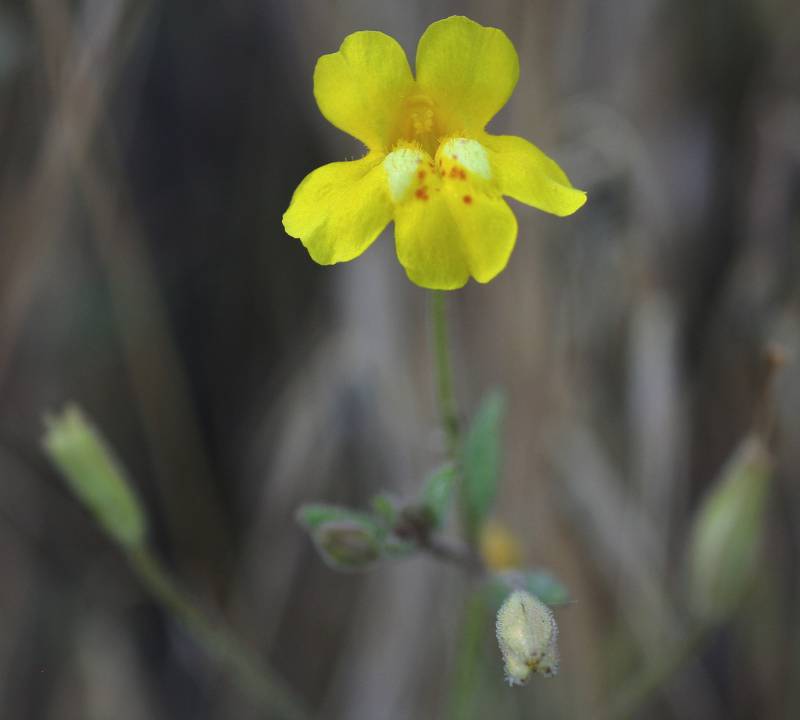Erythranthe washingtonensis
Erythranthe dentata
Washington monkey-flower
coastal monkey-flower, tooth-leaved monkey-flower
Leaves cauline, basal ones not persistent;
petioles 2-14 mm;
blade triangular to ovate to narrowly ovate, 4-16 mm long and 2-11 mm broad, palmate venation, base rounded to cuneate to truncate, margins finely toothed or entire, apex acute, surfaces hairy-glandular as stems.
Leaves opposite, serrate, pinnately veined, but the principle lateral veins arising below the middle;
leaf blades lance-elliptic to ovate, acute, the lower short-petiolate, the upper sessile, 2-7 cm. long and 1-3.5 cm. wide.
Axillary flowers 1-6, emerging from nodes throughout; fruiting pedicels 20-50 mm, densely covered with minute stalked glands;
calyx greenish, ridged, tubular, slightly inflated, 6-8 mm, margins toothed or lobed, covered with minute stalked glands, lobes pronounced, erect;
corollas yellow with small reddish brown dots, lower limb with two whitish patches, symmetric bilaterally, bilabiate;
tube-throat funnel-shaped and 8-10 mm, protruding beyond calyx margin;
limb expanded 7-10 mm, lobes obovate-oblong, apex rounded to somewhat cuneate;
styles hispid-hirtellous;
anthers not protruding, glabrous.
Flowers few, solitary in the leaf axils, on long pedicels;
calyx 8-16 mm. long, 5-angled with spreading hairs along the ribs, the 5 teeth acute, 2-5 mm. long;
corolla 2.5-4 cm. long, bilabiate, yellow, the long, strongly-flaring throat often red-dotted, the 5 well-developed lobes sometimes washed with reddish-purple;
stamens 4.
Capsules 5-8.5 mm, included.
Capsule.
Erythranthe washingtonensis
Erythranthe dentata
- Local floras:
OR,
WA
- Local Web sites:
Flora NW,
PNW Herbaria
WildflowerSearch
iNaturalist (observations)
- LBJ Wildflower Center
- SEINet
- Plants of the World Online
- Encyclopedia of Life
- Wikipedia
- Google Image Search
- Local floras:
BC,
CA,
OR,
WA
- Local Web sites:
CalFlora,
CalPhotos,
Flora NW,
PNW Herbaria
WildflowerSearch
iNaturalist (observations)
- LBJ Wildflower Center
- SEINet
- Plants of the World Online
- Encyclopedia of Life
- Wikipedia
- Google Image Search



